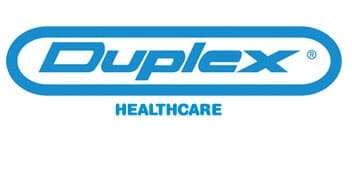FREE WHITEPAPER: Steam & Microfibre in Healthcare
In the realm of healthcare, where lives are at stake, a silent hero works tirelessly to protect patients, healthcare workers, and the community at large. This unsung hero is surface disinfection. While it may not receive the same recognition as doctors or nurses, its significance in preventing the spread of infections cannot be overstated. In this blog post, we will delve into the vital role surface disinfection plays in healthcare settings and the broader community. Join us as we explore the importance of this often-overlooked yet critical aspect of healthcare.

1. The Impact of Contaminated Surfaces
Healthcare settings, such as hospitals, clinics, and doctor's offices, are breeding grounds for bacteria, viruses, and other pathogens. These pathogens can survive on various surfaces, including doorknobs, countertops, medical equipment, and even the furniture in waiting areas. Contaminated surfaces serve as reservoirs for harmful microorganisms, allowing them to persist and potentially infect individuals who come into contact with them.
2. Preventing Healthcare-Associated Infections (HAIs)
Healthcare-associated infections (HAIs) are infections that patients acquire while receiving medical treatment in healthcare facilities. They pose a significant threat to patient safety and can lead to increased morbidity, prolonged hospital stays, and even death. Surface disinfection plays a crucial role in preventing HAIs by effectively eliminating or reducing the presence of pathogens on various surfaces, thereby reducing the risk of transmission.
3. Infection Prevention Practices
Healthcare facilities employ stringent infection prevention practices to safeguard patients, healthcare workers, and visitors. Alongside hand hygiene, personal protective equipment, and proper ventilation, surface disinfection is a cornerstone of these practices. Regularly disinfecting high-touch surfaces, such as bed rails, light switches, and computer keyboards, can help break the chain of infection and protect vulnerable individuals.
4. The Role of Environmental Services
The individuals responsible for surface disinfection in healthcare facilities are the unsung heroes of infection prevention. Environmental services managers (ESM) play a pivotal role in maintaining a clean and safe environment. Their meticulous cleaning and disinfection routines ensure that surfaces are free from pathogens, creating a healthier and safer space for all. Environmental services staff work diligently behind the scenes, making significant contributions to patient care and well-being.
5. Extending the Impact Beyond Healthcare Settings
While surface disinfection is paramount in healthcare settings, its importance extends far beyond hospitals and clinics. Public spaces, schools, offices, and homes can all benefit from effective surface disinfection practices. In light of recent global health crises, there has been a heightened awareness of the need for maintaining clean and hygienic environments. By implementing proper surface disinfection protocols, we can reduce the spread of illnesses and create safer spaces for everyone.
Surface disinfection is the unsung hero of healthcare, quietly working to protect patients and prevent the spread of infections. By targeting contaminated surfaces, we can disrupt the transmission of harmful pathogens and safeguard the health and well-being of individuals in healthcare settings and beyond. The dedicated efforts of environmental services personnel, coupled with effective surface disinfection practices, are crucial in maintaining a clean and safe environment. Let us acknowledge the importance of this silent hero and ensure that surface disinfection remains a top priority in our collective pursuit of a healthier future.
Would you like more information on UV disinfection technologies?
Please call us at 1800 622 770 or submit our contact form for more information.


